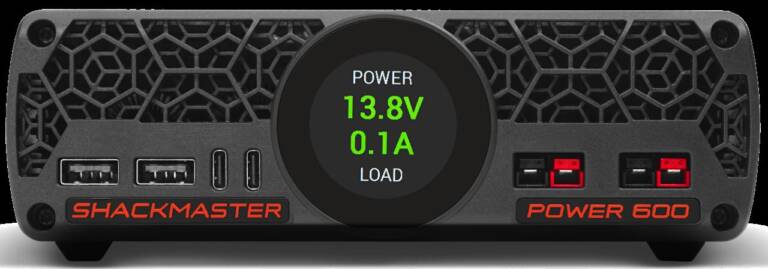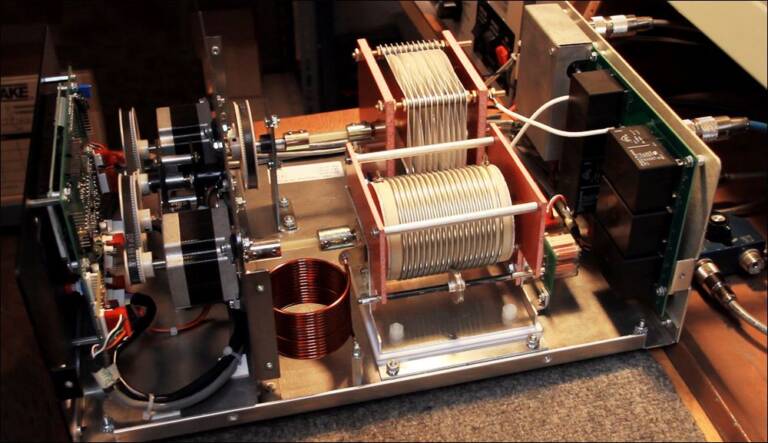Ham Radio Antennas Explained
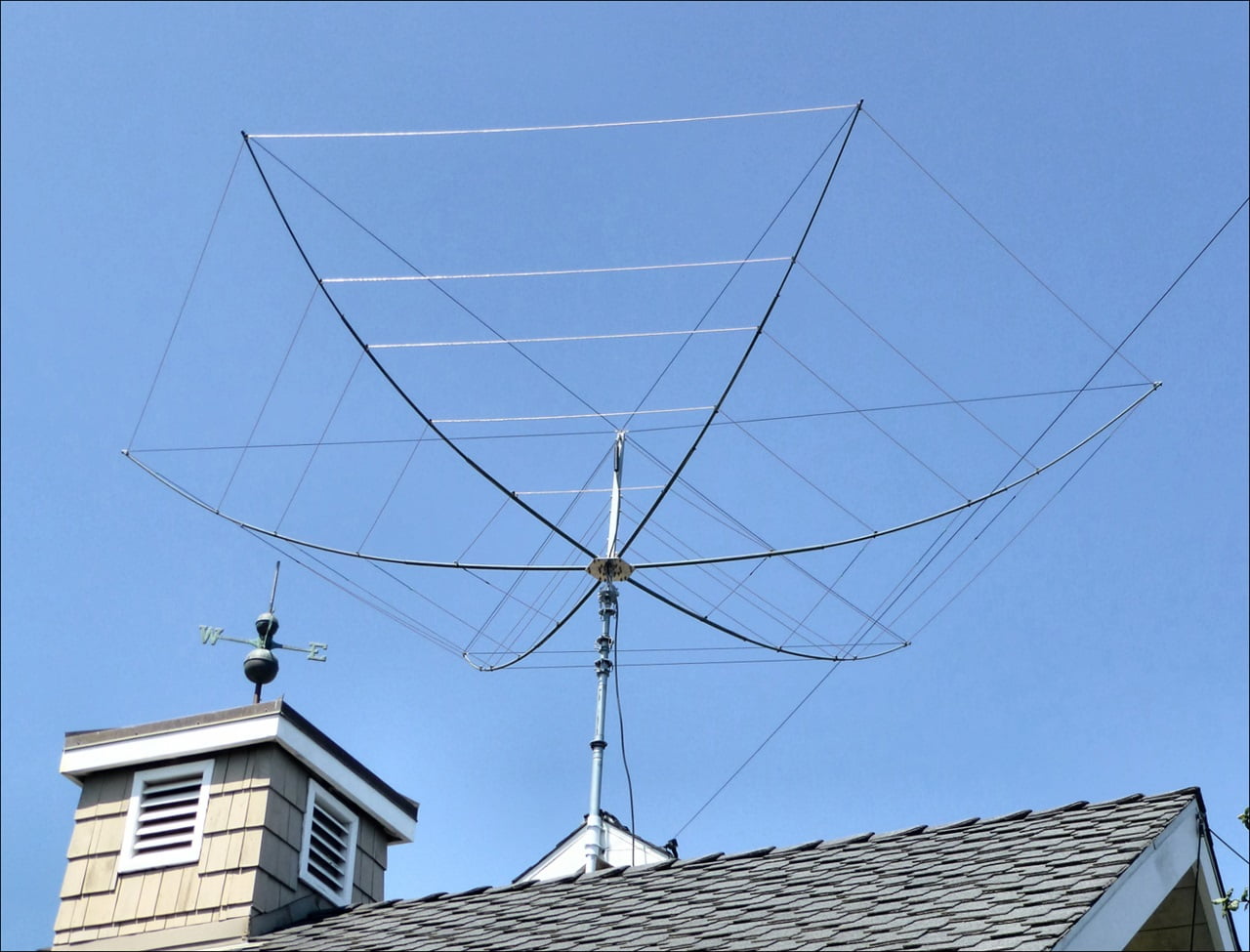
What is an Antenna?
Antennas are devices that transmit or receive electromagnetic (EM) energy in a way suitable for a specific application. Examples of EM energy: Light waves, radio waves, cell phone signals, microwave oven power sources, and radar signals. For this discussion, we are focused on Ham Radio signals.
When your transmitter puts a current (Radio Frequency (RF) energy) into an antenna, your antenna responds by producing a magnetic field surrounding the antenna (this is the signal). When this magnetic wave strikes another antenna (the receiving station antenna), it induces a current on the receiving antenna surface (that current is then converted by the receiving station receiver to sound).
Radio Spectrum – 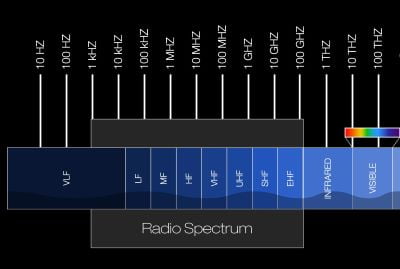 The basic building block of radio communications is a radio wave. To understand how an antenna works you must first have a basic idea of the makeup of a radio wave. Radio waves have the longest wavelengths in the electromagnetic spectrum. Like waves on a pond, a radio wave is a series of repeating peaks and valleys. The entire pattern of a wave, before it repeats itself, is called a cycle. The wavelength is the distance a wave takes to complete one cycle. The number of cycles, or times that a wave repeats in a second, is called frequency. Frequency is measured in the unit hertz (Hz), referring to a number of cycles per second. One thousand hertz is referred to as a kilohertz (kHz), 1 million hertz as a megahertz (MHz), and 1 billion hertz as a gigahertz (GHz). The range of the radio spectrum is considered to be 3 KHz up to 300 GHz.
The basic building block of radio communications is a radio wave. To understand how an antenna works you must first have a basic idea of the makeup of a radio wave. Radio waves have the longest wavelengths in the electromagnetic spectrum. Like waves on a pond, a radio wave is a series of repeating peaks and valleys. The entire pattern of a wave, before it repeats itself, is called a cycle. The wavelength is the distance a wave takes to complete one cycle. The number of cycles, or times that a wave repeats in a second, is called frequency. Frequency is measured in the unit hertz (Hz), referring to a number of cycles per second. One thousand hertz is referred to as a kilohertz (kHz), 1 million hertz as a megahertz (MHz), and 1 billion hertz as a gigahertz (GHz). The range of the radio spectrum is considered to be 3 KHz up to 300 GHz.
Note: A licensed Amateur Radio Operator with HF privileges transmitting on the 20 Meter Band is using the frequency spectrum between 14.000 MHz to 14.350 MHz. The antenna in use for this operation should be tuned with a Standing Wave Ratio (SWR) of 2:1 or less for efficient signal radiation strength within that frequency range.
Antenna Operation – As noted, a radio wave is generated by a Ham Radio transmitter and then detected by a receiver. An antenna allows a radio transmitter to send energy into a space and a receiver to pick up energy from a space. A space can be described as anywhere indoors, outdoors, across a city, across a state or country, and even around the Earth or into Space. Transmitters and receivers are typically designed to operate over a limited range of frequencies, and require an antenna designed (matched / resonant) for the same ranges.
This was a very brief overview, but if you’re interested in a deep-dive article about Ham Radio Antennas, head over to Simone Mannini’s article. He goes into great detail while still keeping the content easy to consume.
| Ham Radio Antenna Designs | |
| Type | Description |
Yagi-Uda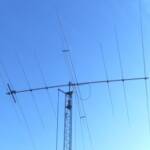 |
A Yagi-Uda antenna, also referred to as a Yagi, is a directional antenna consisting of a driven element, a reflector, and one or more directors. It can be single or multi-banded. Suitable for long-distance communications. Can be heavy and expensive. |
Vertical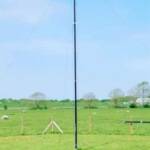 |
A vertical antenna radiates in all horizontal directions, making it suitable for general communication. It consists of a single radiating element mounted vertically (upright) with radials to serve as a ground plane. Great for DX (long distance communications. Can be susceptible to local EMI (electromagnetic interference noise). |
Hexbeam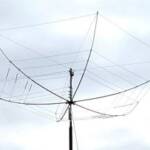 |
The Hexbeam beats the Yagi "hands down" for F/B across the band, reaching a peak of 26dB and never falling below 14dB for most well built designs. Additionally, the typical SWR is well-behaved with a minimum of 1.2, rising to 1.8 at the band edges. A nice feature of the Broadband design is that it allows you to place minimum SWR at the same frequency as peak F/B. This antenna is absolutely my favorite performer. |
Dipole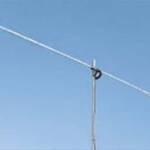 |
A dipole antenna is arguably the most common type of antenna system for amateur radios. Dipole antennas are affordable, simple to assemble, and widely available online and in stores. It’s efficiency means less voltage is necessary for transmission and less amplification is needed for reception. Most wire dipole antennas are dual-band. |
Log-Periotic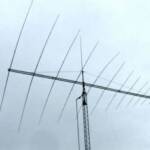 |
A log-periodic antenna is a directional antenna with a wide frequency range. It consists of several half-wavelength dipoles, each cut for a specific frequency. It’s mounted on a boom and fed through a transmission line. Log-periodic antennas are powerful and can be used on the entire spectrum. |
Quad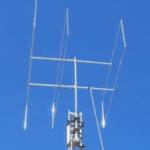 |
A quad antenna, also known as a cube antenna, is directional and made up of one or more square or rectangular loops, each functioning as an element. Instead of two quarter-waves, it uses a full wave. It can be configured as a single loop (mono-band) or multiple loops (multi-band), and it can operate on multiple frequency bands like UHF, VHF, and HF. Although not the most robust, they have some of the best gain among all types of ham antennas. |
Loop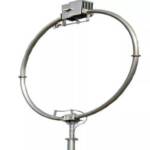 |
A loop antenna is a type of antenna that consists of a wire or metal loop, usually fed at the bottom. Its appearance looks similar to an oversized steering wheel. Loop antennas can be small, magnetic loops or large, resonant loops. Magnetic loop antennas are typically used over HF signals, whereas electric loop antennas are used over VHF/UHF bands (30 MHz to 3 GHz). Smaller in size than most Ham Radio antennas, they work great in places where size is the primary factor (think HOA and Apartments). |
End Fed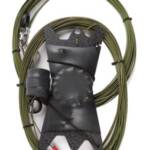 |
The end fed antenna, often referred to as a long wire antenna, includes several types such as the end fed random wire and end fed half wave antennas. Easy mounting is a major advantage of end fed antennas. These types of antennas tend to have interference, so grounding them can help limit this. Operators may also utilize an antenna tuner or tuning unit (ATU) to match the feedpoint to the transceiver. |
